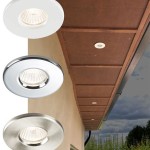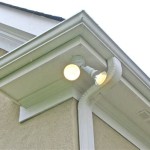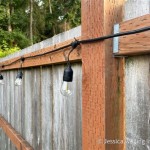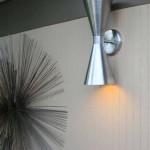How To Install an Outdoor Wood Furnace: A Comprehensive Guide
Installing an outdoor wood furnace can be a significant undertaking, offering a cost-effective and environmentally conscious heating solution for homes and businesses. However, the process requires meticulous planning, adherence to safety regulations, and a thorough understanding of the equipment involved. This article provides a comprehensive guide to installing an outdoor wood furnace, covering essential steps and considerations to ensure a safe and efficient operation.
Before commencing the installation, it is imperative to research and comply with all local codes and regulations pertaining to outdoor wood furnaces. These regulations can vary significantly depending on the municipality and may cover aspects such as setback distances from property lines and structures, chimney height requirements, and emission standards. Contacting the local building department and fire marshal is crucial to obtain the necessary permits and ensure the installation meets all legal requirements. Failure to comply with regulations can result in fines, penalties, and potentially, the forced removal of the furnace.
Selecting the appropriate outdoor wood furnace is a critical first step. The size of the furnace should be determined based on the heating load of the building, which is influenced by factors such as square footage, insulation levels, and climate conditions. An undersized furnace will struggle to maintain a comfortable temperature during peak heating periods, while an oversized furnace can lead to inefficient operation and increased fuel consumption. Consulting with a qualified heating professional can help determine the optimal furnace size for the specific application.
The location of the outdoor wood furnace is another crucial consideration. The furnace should be situated on a level, non-combustible surface, such as a concrete pad or gravel bed, at a safe distance from any flammable materials, including buildings, trees, and overhanging structures. Adequate clearance around the furnace is essential for maintenance and refueling purposes. In addition, prevailing wind direction should be considered to minimize the potential for smoke and ash to drift onto nearby properties. Accessibility for fuel delivery and ash removal should also be taken into account when selecting the location.
Once the location has been determined and the necessary permits obtained, the installation process can begin. This typically involves preparing the site, installing the furnace, connecting the water lines, installing the chimney, and testing the system.
Key Point 1: Site Preparation and Foundation Construction
The foundation for the outdoor wood furnace is a critical component of the installation. It provides a stable and level base for the furnace, preventing settling and ensuring proper operation. A concrete pad is generally recommended, as it offers superior durability and resistance to the elements. The pad should be sized according to the furnace manufacturer's specifications and should be reinforced with rebar to prevent cracking. The concrete should be poured to a minimum thickness of four inches and allowed to cure fully before the furnace is installed.
Alternatively, a gravel bed can be used as a foundation, provided it is properly prepared. The gravel bed should be at least 12 inches deep and compacted to ensure stability. A layer of geotextile fabric can be installed beneath the gravel to prevent weed growth and improve drainage. The gravel bed should extend beyond the perimeter of the furnace to provide a stable footing and prevent erosion. Regardless of the foundation material, it is essential to ensure that the surface is level and free from any obstructions.
Prior to pouring the concrete or constructing the gravel bed, the site should be excavated to the required depth. Any vegetation, topsoil, and debris should be removed to ensure a solid base. Proper drainage should be provided to prevent water from accumulating around the foundation. This can be achieved by sloping the ground away from the foundation or installing a drainage system. A well-prepared foundation will contribute significantly to the longevity and stability of the outdoor wood furnace.
After the foundation is cured or compacted, the furnace can be carefully placed on top. It is recommended to use a crane or other heavy lifting equipment to avoid damaging the furnace or injuring personnel. Once the furnace is in position, it should be secured to the foundation using anchor bolts or other appropriate fasteners. This will prevent the furnace from shifting or tipping over, especially during high winds or seismic activity.
Key Point 2: Connecting Water Lines and Electrical Components
Connecting the water lines is another crucial step in the installation process. Outdoor wood furnaces typically utilize a closed-loop hydronic system to circulate heated water to the building. This system consists of supply and return lines that connect the furnace to the existing heating system, such as radiators, baseboard heaters, or radiant floor systems. The water lines should be constructed of durable, heat-resistant materials, such as PEX tubing or copper pipe. PEX is a popular choice due to its flexibility and ease of installation, while copper offers excellent heat transfer properties.
The water lines should be properly insulated to minimize heat loss and prevent freezing during cold weather. Closed-cell foam insulation is commonly used for this purpose, as it provides excellent thermal resistance and is resistant to moisture. The insulation should be applied to the entire length of the water lines, including any fittings or connections. In areas with severe winters, additional insulation or heat tracing may be necessary to prevent freezing.
When connecting the water lines to the existing heating system, it is important to follow the manufacturer's instructions carefully. A mixing valve may be required to regulate the water temperature and prevent overheating. A pressure relief valve should also be installed to protect the system from overpressure. All connections should be properly sealed to prevent leaks. It is recommended to pressure test the system after installation to ensure that there are no leaks before firing up the furnace.
Outdoor wood furnaces also require electrical connections for various components, such as the blower motor, circulator pump, and control panel. These connections should be made by a qualified electrician in accordance with all applicable electrical codes. The furnace should be properly grounded to prevent electrical shock. A dedicated circuit breaker should be installed to protect the furnace from overcurrent. The electrical wiring should be protected from the elements by using weatherproof conduit and fittings.
Key Point 3: Chimney Installation and System Testing
The chimney is a critical component of the outdoor wood furnace, as it provides a means for exhausting combustion gases safely and efficiently. The chimney should be sized and installed according to the manufacturer's specifications and all applicable building codes. The height of the chimney is particularly important, as it affects the draft and the dispersion of smoke. A chimney that is too short may result in poor draft and excessive smoke, while a chimney that is too tall may be unstable and prone to collapse.
The chimney should be constructed of durable, heat-resistant materials, such as stainless steel or double-wall chimney pipe. Single-wall chimney pipe is not recommended for outdoor wood furnaces, as it can corrode quickly and pose a fire hazard. The chimney should be properly insulated to maintain a consistent draft and prevent condensation. The insulation should be applied to the entire length of the chimney, including any joints or connections.
When installing the chimney, it is important to ensure that it is properly supported and secured to the furnace and the surrounding structure. Guy wires or braces may be necessary to stabilize the chimney, especially in areas with high winds. The chimney should be inspected regularly for damage or deterioration. Any cracks, leaks, or corrosion should be repaired promptly to prevent carbon monoxide poisoning or fire.
Once the chimney has been installed and all other connections have been made, the system should be thoroughly tested before being put into operation. The testing should include a visual inspection of all components, a pressure test of the water lines, and a smoke test of the chimney. The furnace should be fired up gradually to allow the system to warm up and stabilize. The water temperature and pressure should be monitored closely to ensure that they are within the manufacturer's specifications. Any leaks, malfunctions, or other problems should be addressed immediately.
After the initial testing, the system should be operated for several hours to ensure that it is functioning properly. The water temperature, pressure, and flow rate should be monitored regularly. The chimney should be inspected for smoke and creosote buildup. The ash should be removed periodically to maintain efficient combustion. With proper installation, maintenance, and operation, an outdoor wood furnace can provide a reliable and cost-effective heating solution for many years.
Beyond these key points, ongoing maintenance is crucial for the longevity and efficiency of the outdoor wood furnace. This includes regular cleaning of the heat exchanger, inspection of the water lines for leaks, and monitoring the condition of the chimney. Adhering to the manufacturer's recommended maintenance schedule will help prevent costly repairs and ensure optimal performance.
Finally, safety should always be the top priority when operating an outdoor wood furnace. Install carbon monoxide detectors inside the home to provide early warning of any potential leaks. Keep flammable materials away from the furnace and chimney. Never leave the furnace unattended while it is burning. By following these safety precautions, you can enjoy the benefits of an outdoor wood furnace without endangering yourself or your property.

Outdoor Wood Coal Boiler Installation

Installation Of A Nature S Comfort Outdoor Wood Furnace

Installation Of A Nature S Comfort Outdoor Wood Furnace

Outdoor Furnace Installation Tips For Do It Yourselfers And Pros

Installation Diagrams Portage Main Boilers Duluth Mn

Installation Diagrams Portage Main Boilers Duluth Mn Boiler Outdoor Wood Furnace Burner

Plumbing Installation Ez Boilers Outdoor

Installation Diagrams Portage Main Boilers Duluth Mn

Outdoor Wood Coal Boiler Installation

Installation Of A Nature S Comfort Outdoor Wood Furnace
Related Posts







